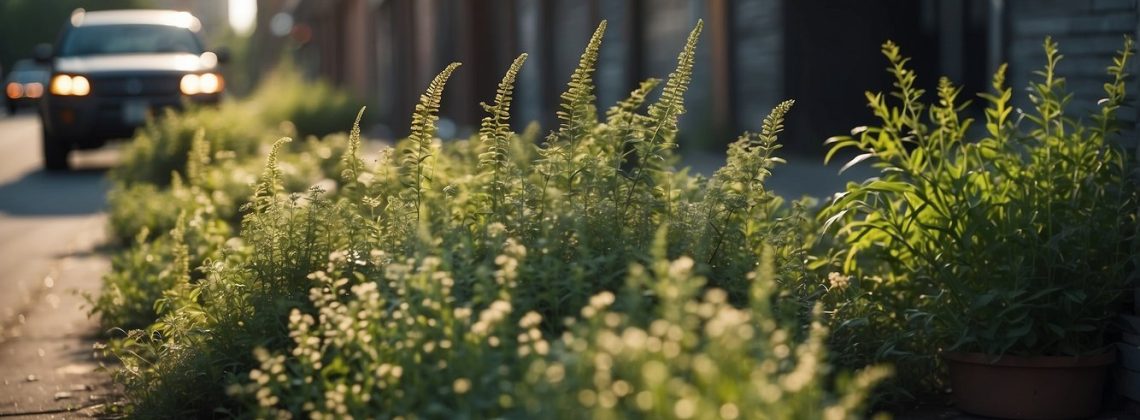
Foraging in urban landscapes can provide valuable resources in times of need.
Understanding what’s available and edible in an urban setting requires knowledge of local flora, which varies depending on the climate and geography. A prepper’s guide to urban foraging equips you with the tools to safely identify edible plants, understand their nutritional value, and use them beneficially. It’s crucial to distinguish between safe and potentially harmful plants and to understand the right timing for harvesting to maximize yield and nutritional benefits. This guide also delves into the best practices for foraging across different urban settings, ensuring respect for the environment and local regulations.
Harvesting urban flora is just the beginning. The guide will help you process and preserve your finds, turning them into delicious and nutritious components of your meals. You’ll learn to incorporate foraged items into recipes and how to build an essential toolkit for urban foraging. Moreover, it encourages a strategic approach to foraging that can support a sustainable lifestyle over the long term. Whether you’re a seasoned prepper or new to the practice, the wealth of information available will empower you to make the most of your urban environment.
Key Takeaways
- Urban foraging skills can be essential to survival in times of need.
- Safe identification and harvesting of edible plants are essential for urban foraging.
- Processing and incorporating foraged items into meals contributes to a self-sufficient food production approach.
Understanding Urban Foraging
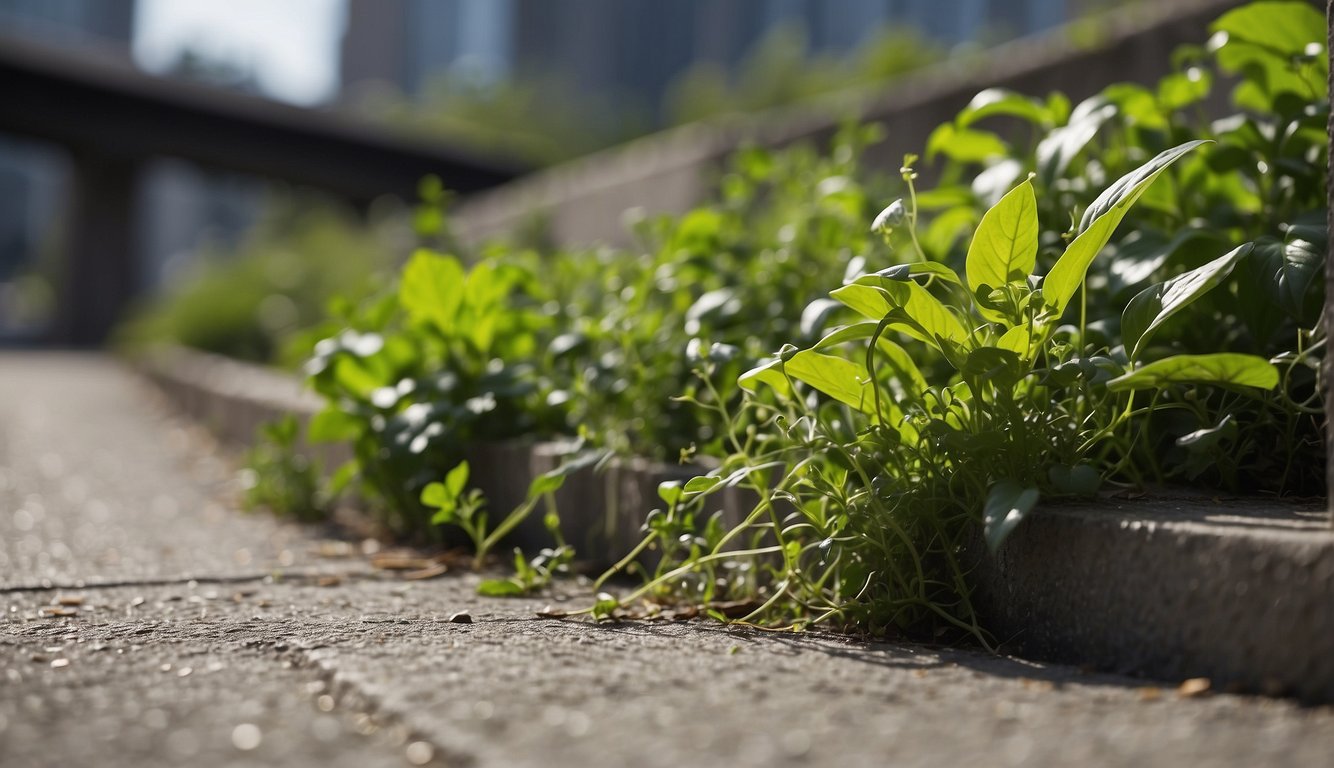
Urban foraging involves searching for edible plants and food resources that grow in urban environments. Your awareness of foraging techniques, local regulations, and sustainability is crucial to practice this activity effectively and safely.
Foraging Fundamentals
- Identify Edible Species: Learn to distinguish between edible and non-edible plants. Invest in a reliable field guide or join workshops conducted by experienced foragers.
- Location Assessment: Seek out plants in areas free from pollution, such as community gardens or less-traveled green spaces.
Legal and Safety Considerations
- Know the Local Laws: Foraging on public lands may be governed by local regulations. Always obtain permission if required and ensure you’re not trespassing.
- Prioritize Safety: Wear protective clothing and avoid areas that may be contaminated with pesticides or heavy metals. Never consume a plant unless you’re 100% certain of its safety.
Sustainable Foraging Practices
- Harvest Responsibly: Take only what you need and never harvest more than a third of a plant’s produce to allow it to continue to grow.
- Protect Biodiversity: Be mindful of preserving local ecosystems. Avoid foraging in areas where plants are sparse or endangered.
Identifying Edible Urban Flora
When foraging in urban areas, it’s imperative to accurately identify edible plants and distinguish them from potentially hazardous ones. Familiarize yourself with the techniques and common plants while keeping safety in mind.
Plant Identification Techniques
Before you begin foraging, learn to identify plants using detailed field guides or mobile apps (if they are still functioning) specialized for plant identification. Observe the plant’s characteristics: leaf shape, flower color and pattern, and stem structure. Always cross-reference multiple sources to confirm a plant’s edibility.
- Leaf Shape: Look for signature shapes that distinguish edible leaves from inedible ones.
- Flower Color: Note the hue and arrangement of petals.
- Stem Structure: Check for distinctive features like the presence of hairs or the stem’s texture.
Common Urban Edible Plants
In urban landscapes, several resilient edible plants thrive. Here are some you may encounter:
- Dandelions (Taraxacum officinale): Easily recognized by their bright yellow flowers and serrated leaves, every part of the dandelion is edible—root, leaves, and flowers.
- Stinging Nettle (Urtica dioica): Has heart-shaped, toothed leaves and tiny hairs that can irritate skin. Cooking removes the sting, making the leaves safe to eat.
- Chickweed (Stellaria media): Identified by its small, star-shaped flowers and opposite, oval leaves. It’s often found in clusters and is a nutritious wild green.
Avoiding Hazardous Plants
Your safety is paramount. Avoid plants growing near roadsides or industrial areas due to potential contamination with heavy metals or chemicals. Never consume a plant unless you are 100% certain of its identity and edibility.
- Location: Steer clear of plants in polluted or treated areas.
- Certainty: If in doubt, do not eat. Double-check with reliable sources.
- Lookalikes: Beware of edible plants’ poisonous doppelgangers.
Medical and Nutritional Aspects

In this section, you will learn about the medical benefits of urban foraged plants, how to harness their properties through tinctures and infusions, and the nutritional value of the wild edibles you may encounter.
Medicinal Properties of Plants
Urban environments are surprisingly rich in plants with medicinal properties. For instance:
- Dandelion: The roots and leaves are known to aid digestion and liver function.
- Plantain: Commonly found in cracks in the pavement, plantain leaves can be used to soothe skin irritation.
Identify these plants correctly to safely use them for their medicinal benefits.
Creating Tinctures and Infusions
Tinctures and infusions offer a way to preserve the medicinal properties of plants. Here’s a basic guide:
Tinctures:
- Finely chop the medicinal parts of the plant.
- Soak them in alcohol with a high proof to extract the medicinal compounds.
Infusions:
- Similar to making tea; pour hot water over plant material and let it steep.
- For leaves like mint, steeping for 5-10 minutes is often enough.
Ensure you’re using clean, sanitized containers to avoid introducing any contaminants into your medicinal items.
The Nutrient Profile of Wild Edibles
Wild edibles can be incredibly nutrient-dense, offering a wide range of vitamins and minerals. Here are some examples:
| Edible Plant | Nutrient Benefits |
|---|---|
| Wild Berries | High in antioxidants, vitamins C and K, and fiber |
| Nuts | Good sources of healthy fats, proteins, and magnesium |
Always verify the identity of wild edibles to avoid consuming toxic look-alikes. Be aware of the local regulations regarding foraging in your area.
Foraging in Different Urban Settings
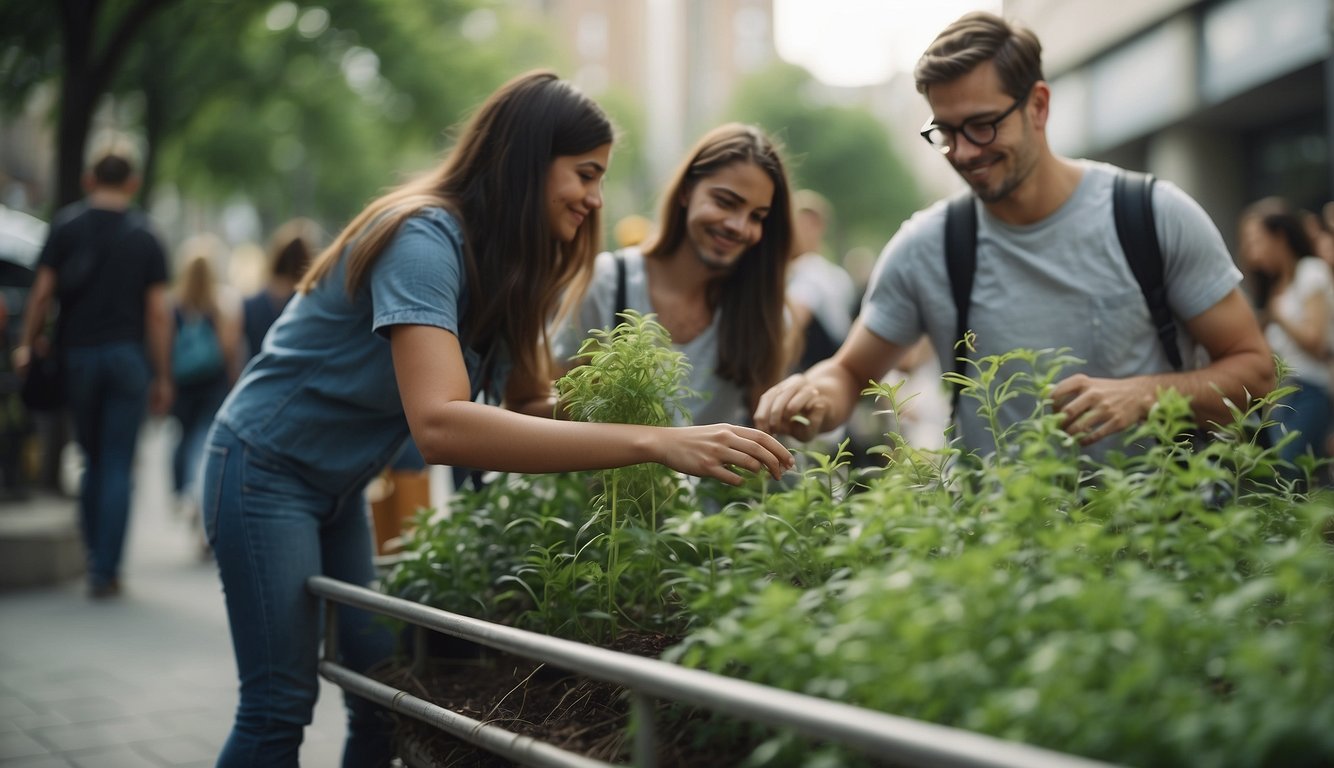
When foraging in urban landscapes, it is crucial to identify safe and legal locations to gather plants. Understanding the different urban settings available to you will bolster your foraging efforts without causing harm to the environment or infringing on private properties.
Green Spaces and Parks
Green spaces and parks offer a variety of forageable plants, ranging from wild edibles to overgrown fruit trees. In these public areas, you’re likely to find dandelion, plantain, and nettles. It’s important to be respectful of these public spaces by not overharvesting and to always check for local policies regarding foraging.
- Permitted Forageables:
- Dandelion (Taraxacum officinale)
- Plantain (Plantago major)
- Nettles (Urtica dioica)
Residential Areas
Residential areas can be surprisingly rich with forageable foods, often from overhanging fruit trees or garden herbs growing along property lines. Ensure that you have permission if plants are on private land. Look for common edibles like rosemary, mint, and fruit trees, but always be mindful of potential pesticide use, which may render plants unsafe for consumption.
- Common Edibles:
- Rosemary (Rosmarinus officinalis)
- Mint (Mentha)
- Fruit trees (various species)
Vacant Lots and Alleyways
Vacant lots and alleyways may be untended, but they can harbor a surprising variety of wild edibles. However, due to possible contamination from waste or pollutants, it’s essential to assess the cleanliness of these areas before foraging. You might discover purslane, blackberries, or even the occasional wild tomato plant in these urban nooks.
- Potential Finds:
- Purslane (Portulaca oleracea)
- Blackberries (Rubus fruticosus)
- Wild tomatoes (Solanum lycopersicum)
Harvesting and Processing Finds
When you discover edible plants in urban areas, it’s crucial to know how to effectively harvest, clean, and store your finds. Proper techniques ensure both the safety and quality of the foraged food.
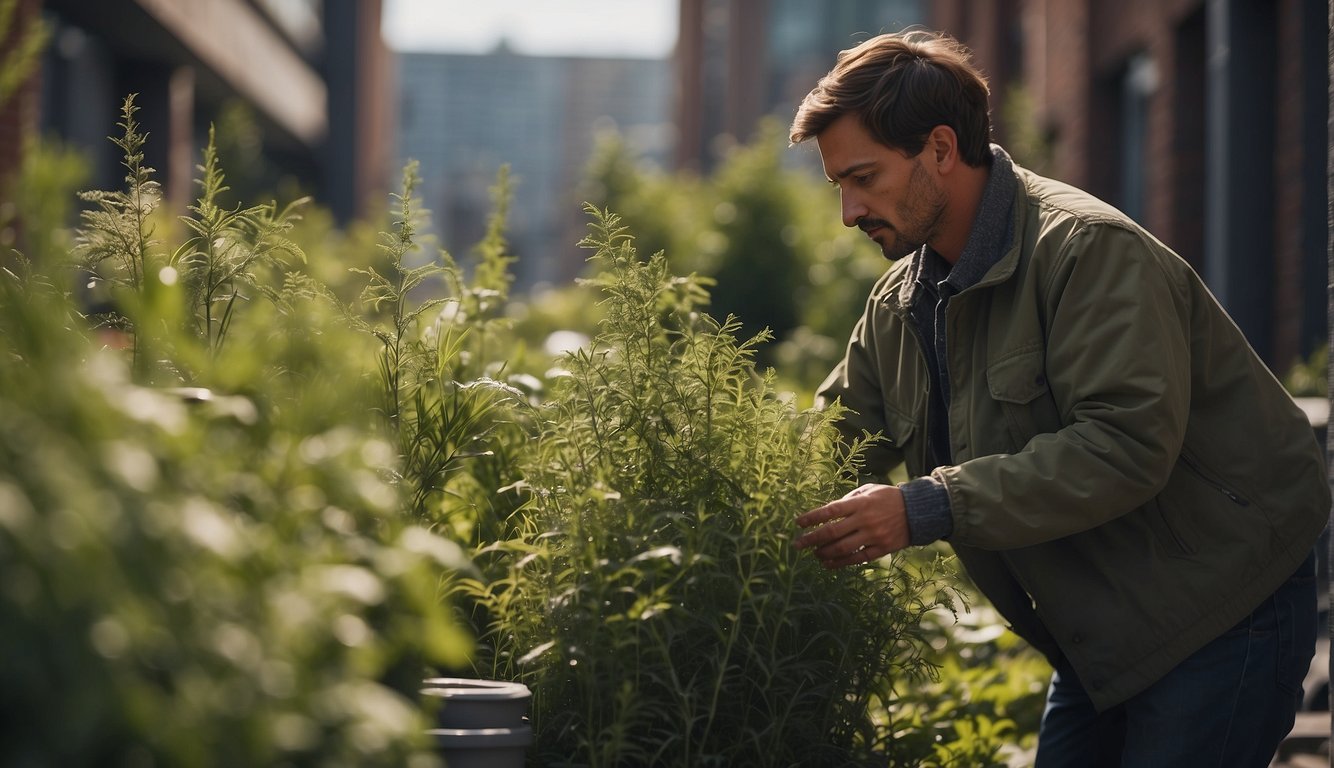
Techniques for Harvesting Urban Plants
Harvesting wild plants requires a delicate touch to preserve the plant and its environment. Use the following steps:
- Identify: Confirm the plant is edible with a reliable guide or application.
- Gather: Use clean scissors or a knife to cut plants, taking only what you need.
- Timing: Harvest early in the morning or late afternoon for peak freshness.
Cleaning and Preparing Wild Foods
To ensure wild foods are safe for consumption, proper cleaning is essential:
- Rinse: Thoroughly rinse plants in cold water to remove dirt and potential contaminants.
- Inspect: Sort through your finds, discard any damaged or diseased parts.
- Blanch: For certain greens, a quick blanch in boiling water can remove bitterness.
Storage and Preservation Methods
Storing and preserving foraged foods correctly is vital to extend their shelf life:
- Drying: Ideal for herbs and some leafy greens. Hang bunches upside down in a well-ventilated area or use a food dehydrator.
- Canning: Use for high-acid foods such as berries or for recipes like preserves.
- Refrigeration: Store fresh finds like salad greens in airtight containers in your fridge.
Following these methods helps to maximize the flavor and nutritional value while ensuring your foraged foods are enjoyed to their fullest.
Recipes and Uses for Foraged Items
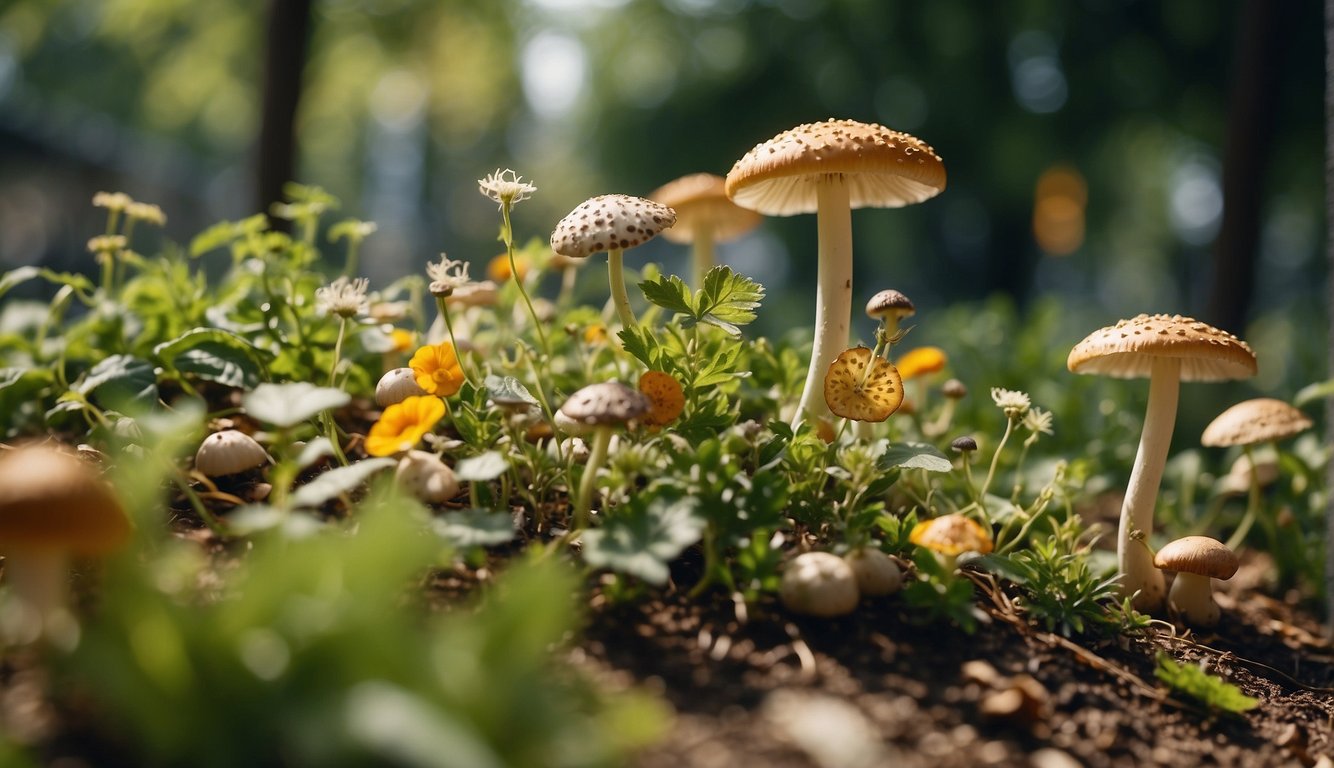
When foraging in urban landscapes, you can find a variety of plants and nuts that serve not just as food ingredients but also for medicinal and practical purposes. Enhanced by simple preparations, these natural finds offer a wealth of opportunities in a disaster scenario.
Simple Recipes for Wild Plant Dishes
Dandelion Salad
- Ingredients: Fresh dandelion leaves, lemon juice, olive oil, salt, pepper.
- Instructions:
- Rinse the dandelion leaves thoroughly.
- Toss with lemon juice, olive oil, and season with salt and pepper to taste.
Walnut Pesto
- Ingredients: Walnuts, fresh basil leaves, garlic cloves, grated Parmesan cheese, olive oil.
- Instructions:
- Blend walnuts, basil leaves, garlic, and Parmesan in a food processor.
- Drizzle in olive oil until a smooth texture is achieved.
Making Natural Remedies
Dandelion Cream
- Uses: Soothes skin irritations and moisturizes.
- Instructions:
- Infuse dandelion flowers in oil.
- Mix with beeswax until the desired consistency is reached.
Practical and Alternative Uses
Walnut Dye
- Applications: Natural wood stain or fabric dye.
- Instructions:
- Crush walnut hulls and soak in water for several days.
- Strain and use the liquid as a stain or dye.
Dandelion Enzyme Cleaner
- Applications: Non-toxic cleaning agent.
- Instructions:
- Ferment chopped dandelion roots and leaves in sugar water for several weeks.
- Filter and dilute the liquid to use for cleaning various surfaces.
Building a Forager’s Toolkit
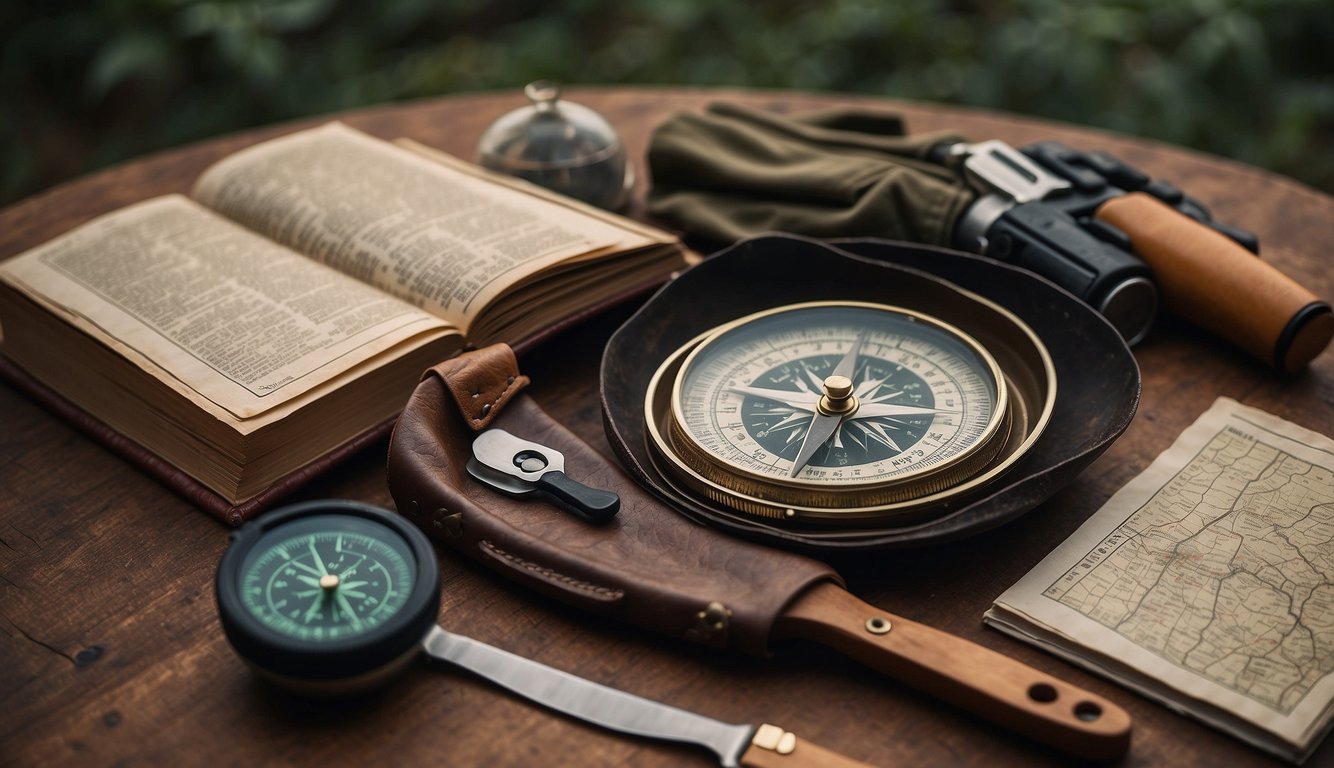
Proper tools and resources are pivotal for safely and successfully foraging in an urban environment. Having the right equipment and authoritative guides can enhance your foraging excursions, ensuring you correctly identify and harvest wild edibles without harm.
Essential Tools for Urban Foraging
Your foraging toolkit should comprise durable, high-quality items that will help you safely collect and transport urban plants and mushrooms. A basic toolkit includes:
- Sturdy Bags or Baskets: Use breathable materials to transport foraged goods, allowing airflow to prevent spoilage. Cloth bags or wicker baskets are excellent choices.
- Gloves: Protect your hands with gloves made from thick material, especially when handling plants that could cause irritation or have thorns.
- Snipping Tools: Equip yourself with pruning shears or a sharp knife for cutting stems or collecting mushrooms without damaging the plant base or the mycelium.
- Trowel: A small digging tool is useful for uprooting plants, especially those with edible roots.
Remember to choose lightweight materials for easy carrying during long walks.
Botanical Guides and Resources
Having accurate botanical guides and resources is essential for identifying plants and trees in your location, especially those that are easily identified and safe to consume.
- Field Guides: Carry a field guide specific to flora. It should have clear photographs and descriptions of plants, trees, and mushrooms.
- Smartphone Apps: Utilize apps (if they are still functioning) that provide botanical knowledge through photos and descriptions. Ensure any app used has a reputable source and regular updates.
- Local Workshops: In preparation, attend workshops or guided walks to gain hands-on experience with experts in the field of urban foraging.
Resources should be region-specific when possible, to account for the diverse range of species found across different urban landscapes.
Planning for Long-Term Success
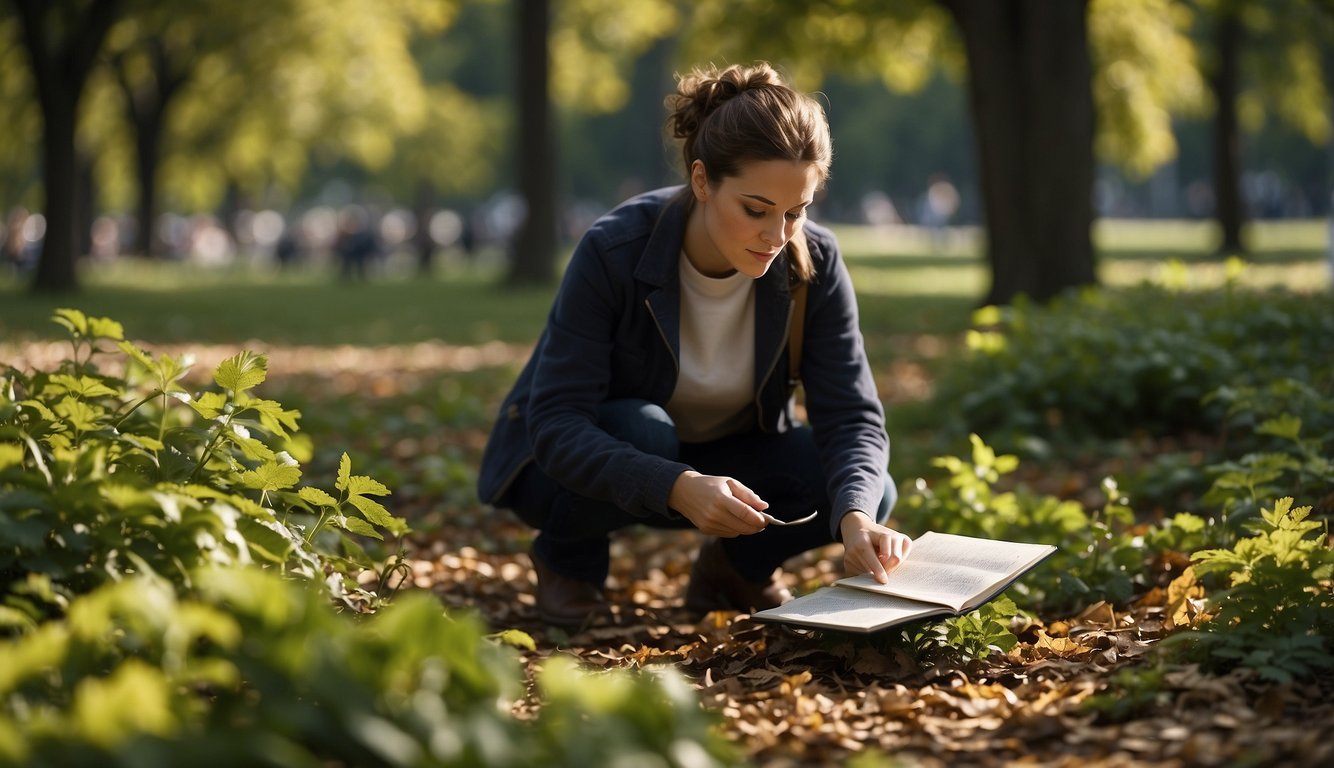
Successful foraging in urban landscapes requires more than basic plant identification. It involves understanding the rhythms of the environment, cooperating with fellow foragers, and sharing knowledge for communal benefit.
Strategic Foraging and Seasonal Planning
In an urban setting, strategic foraging throughout the year maximizes your harvest and ensures sustainability. Map out urban edible plants and foraging spots, and note peak seasons for availability.
- Spring: Tender greens and early berries
- Summer: A wide range of fruits and nuts
- Fall: Root vegetables and late berries
- Winter: Remaining nuts and persistent plants
Aligning your foraging activities with these seasons reduces pressure on plant populations and helps you plan your resources for times of crisis or disaster.
Building Relationships with Local Foragers
Engaging with experienced foragers can drastically improve your skills. Create a network by joining:
- Foraging workshops
- Community gardening groups
- Local foraging tours
In a subsistence living situation, these relationships become a mutual aid network, vital for survival and collective resilience.
Educating the Community on Foraging Benefits
Awareness and education maintain foraging as a viable option in your urban prepping strategy. Facilitate workshops or informational sessions on topics like:
- Safe Plant Identification: Preventing the harvesting of toxic plants.
- Sustainable Harvesting Techniques: Ensuring plant populations regenerate.
Through teaching, you cultivate a well-informed community that respects foraging guidelines, reducing the risk of resource depletion in times of crisis.
Frequently Asked Questions
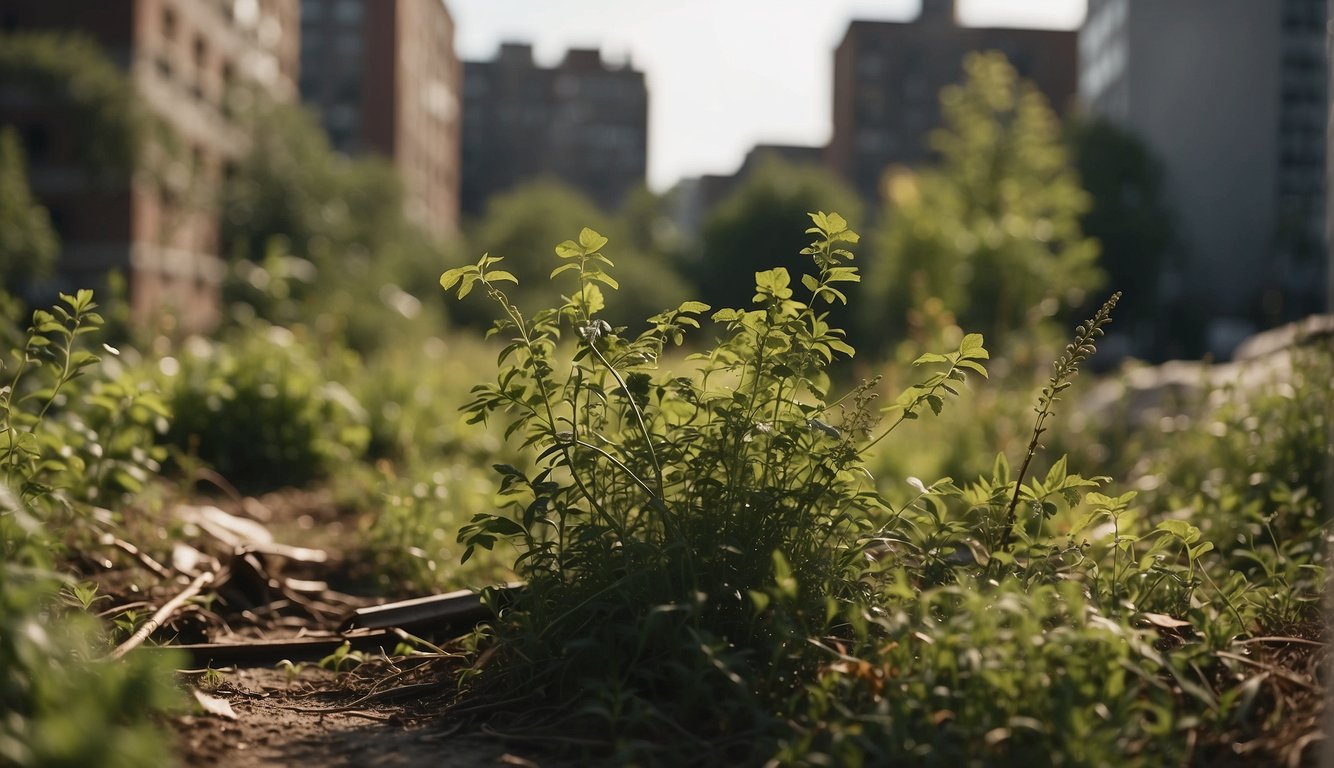
In this section, you’ll find practical guidance for foraging in urban areas, ensuring your safety and adherence to local regulations.
What are the essential tips for safely foraging in urban environments?
When foraging in urban areas, wear gloves, wash everything thoroughly, and avoid locations that may be contaminated by vehicle emissions or pesticides. Always forage away from heavy traffic areas and industrial sites, and ensure plants have not been treated with harmful chemicals.
Where can I find comprehensive information on edible plants native to North America?
For comprehensive information on North American edible plants, the United States Department of Agriculture (USDA) provides an extensive database. Additionally, local botanical gardens or university extension programs can be valuable resources for learning about native edibles.
What are the legal considerations when foraging in urban public spaces?
Always check local laws and regulations regarding foraging. Many urban areas have specific rules that govern the harvesting of plants from public lands. Some areas may require permits or have restrictions on what and how much can be foraged.
How can I distinguish between safe and potentially harmful plants while urban foraging?
Familiarize yourself with local plant life, and cross-reference using reliable field guides or apps. Always be certain of a plant’s identity before consuming, as many edible plants have toxic look-alikes. Consider taking a class or workshop on plant identification.
What is the rule of thumb for responsibly foraging without harming the ecosystem?
As a responsible forager, follow the “Rule of Thirds”: only take one-third of what you find, leave one-third for wildlife, and one-third to continue growing. This practice ensures sustainability and preserves the natural environment for future foraging.

Leave a Reply